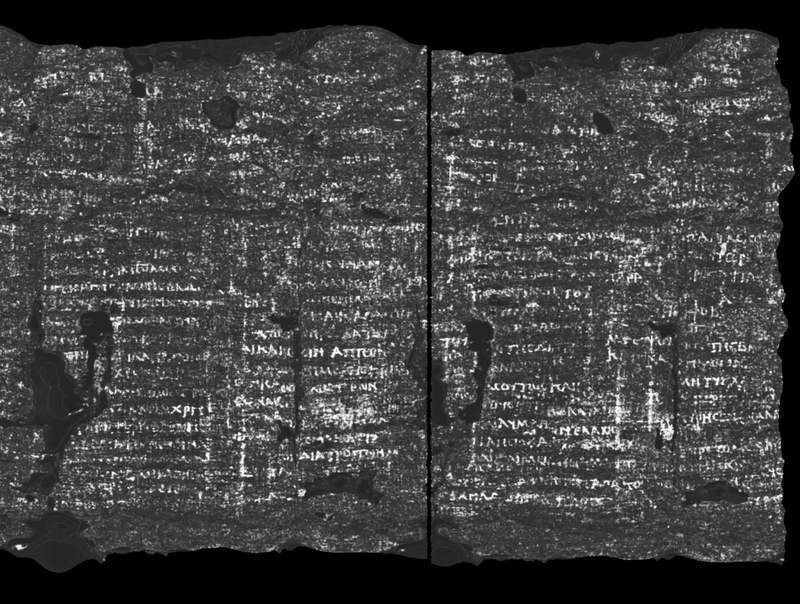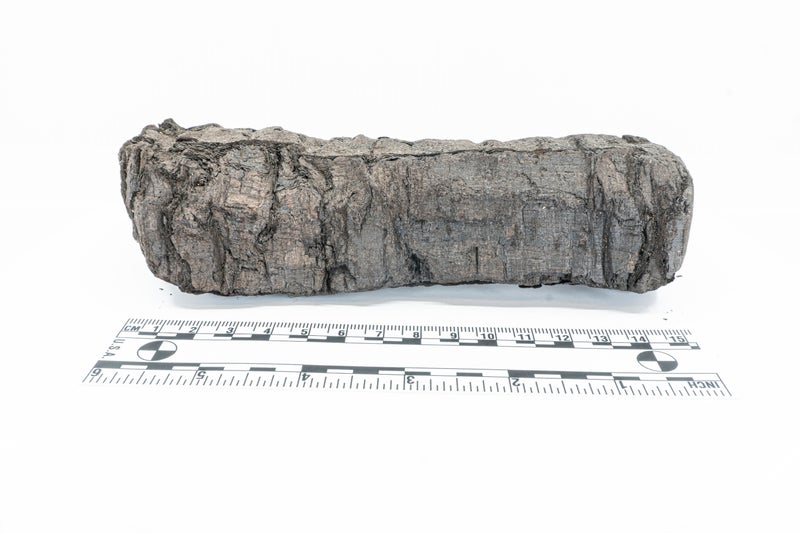Last year, Nat Friedman, a US tech executive and founding sponsor of the Vesuvius Challenge, announced that a team of three students, Youssef Nader in Germany, Luke Farritor in the US, and Julian Schilliger in Switzerland, had won the competition’s $700,000 (£558,000) grand prize after reading more than 2,000 Greek letters from another Herculaneum scroll.
“We are thrilled with the successful imaging of this scroll from the Bodleian libraries,” said Dr Brent Seales, a co-founder of the Vesuvius Challenge, a competition that has spurred dramatic progress in digitally unrolling and reading the scrolls from 3D X-ray images taken at Diamond, the UK’s national synchrotron facility in Oxfordshire.
The scroll is one of hundreds found in the library of a Roman mansion in Herculaneum, a town on the west coast of Italy that was wiped out when Mount Vesuvius erupted in AD79.
AI helps researchers read ancient scroll burned to a crisp in Vesuvius eruption Writing on PHerc.
That scroll, thought to have been written by the epicurean philosopher Philodemus, covered sources of pleasure, from music to food, and explored whether pleasurable experiences arose from the abundant or the scarce, the minor or major constituents of a meal, for example.






















